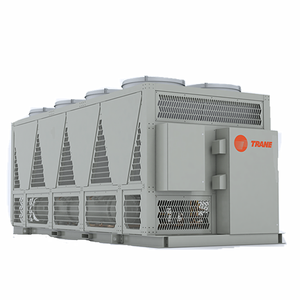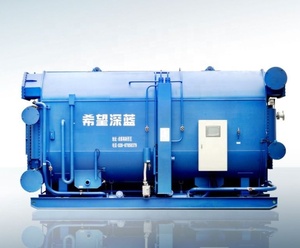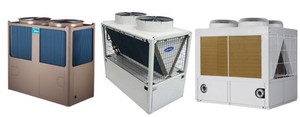(6354 products available)




















































































































































































































A chiller is a piece of equipment used to cool water or any other liquid through a heat exchange process. Japan coolers are an integral part of industrial processes and air conditioning systems. Japan chillers can be classified into two broad categories based on their cooling methods: absorption and refrigerant-based chillers.
Absorption chiller
An absorption chiller uses heat instead of electricity to provide cooling. This process involves the absorption of heat by a solution during a chemical reaction. The heat source can vary widely from industrial waste heat to natural gas or solar energy.
Absorption chillers can be further categorized into single-effect and double-effect models. Single-effect absorption chillers are more common and operate on the same principle as absorption refrigerators. They typically use hot water or steam as their heat source and water lithium bromide as the absorbent-refrigerant pair. Double-effect absorption chillers are more efficient but also more expensive. They utilize two rounds of heat absorption and require higher temperatures to operate.
Refrigerant-based chiller
The refrigerant-based chiller works the same as a vapor compression cooler. Japan refrigerant chillers are more popular due to their high efficiency and broad applicability. They can also be further categorized into air-cooled and water-cooled chillers.
Air-cooled chillers use ambient air to dissipate heat. They are typically smaller and more suitable for commercial buildings or industrial facilities without access to cooling water. Water-cooled chillers are designed to work with cooling towers, which offer larger heat exchange capacities ideal for high-demand industrial applications.
Japan industrial chillers are useful in all kinds of industries. Below are some common industries that use chillers and how they use them.
Food and beverage processing
Food and beverages industries use Japan chillers to regulate temperatures during processing. They provide the cold needed for fermentation, ripening, and preserving ingredients. Japan chillers also provide quick freezing for food to improve its shelf life. They cool down heated equipment and control the temperature of products.
Pharmaceuticals
Japan chillers are important in creating and storing drugs in the pharmaceutical industry. They maintain the right temperatures needed for producing drugs. Japan medicines coolers control the temperatures in rooms, reactors, and other equipment so that drugs can be made with precision. They also protect pharmaceuticals from losing potency or degrading due to temperature changes.
Manufacturing
Japan chillers help different manufacturing processes in various industries. They cool molds during injection molding so that products can be made with ease. In metalwork, Japan chillers reduce heat in cutting, grinding, and welding processes. They also control the temperatures of clean rooms to improve product quality in electronics manufacturing.
Plastics and rubber processing
In plastics and rubber industries, Japan chillers play an important role. They ensure even material flow and help to improve the quality of end products by cooling molds. Japan chillers also reduce heat buildup during the extrusion process. This prevents damage and ensures smooth operations.
Printing and packaging
Japan chillers maintain the right temperatures during printing and packaging processes. They cool down printers so that they can work well and produce clear prints. Japan chillers also reduce heat in laminating and sealing processes. They do this to improve production speed and ensure that packaging materials are reliable.
Textile and dyeing
Japan chillers help in dyeing and finishing processes in textile industries. They ensure uniform color application and prevent dye loss. ChillCooler Japan also regulates temperatures in washing, drying, and spinning equipment. This improves the quality of textile products and reduces the risk of shrinkage or distortion.
Hospitality and cold storage
Hotels, restaurants, and catering services use Japan chillers to preserve food. They also use them to store perishable items such as meat, dairy, and vegetables. Refrigerated warehouses use larger Japan chillers to store a large quantity of perishable foods. Japan chillers also control the temperatures of ice Creams and Beverage dispensers to ensure customers get products that are on the spot.
Data centers
Data centers use large Japan chillers with more than 75hp to cool servers and IT equipment. Japan chillers regulate temperatures and control humidity in data centers. As a result, they protect sensitive equipment from air that is too hot and harsh, and they enhance reliable operations and use energy efficiently.
Business buyers looking for an efficient way to cool their commercial premises need to know some facts about Japan chillers.
Understand the purpose of the chiller
Business buyers need to understand the purpose of the Japan chiller before making a purchase. Different industrial processes and commercial premises may need different types of chillers. Buyers who need to maintain a precise and constant temperature will probably opt for 倉庫 warehouse cooling chillers. While those whose refrigerants could affect the atmosphere will have to go for air chillers like the air-cooled ammonia chiller.
Know the different types of chillers
Business buyers are more likely to be aware that there are many different types of chillers based on various factors like the cooling method, the type of compressor, and the size.
Consider the capacity
The capacity is the amount of heat the chiller removes, measured in kilowatts (kW) or tons. When choosing a chiller, business buyers will have to calculate their cooling requirements and select a chiller with the appropriate capacity. Oversized or undersized chillers can lead to inefficient operation and higher energy costs.
Efficiency matters
Efficiency is an important factor to consider when choosing a Japan chiller, as it can significantly impact operating costs and environmental sustainability. Japan is known for its cutting-edge technology and energy-efficient solutions. To take advantage of it, buyers will have to look for chillers with high energy efficiency ratios (EER) and co-efficient of performance (COP).
Consider the refrigerant
Refrigerant selection is important for both environmental impact and system performance. Refrigerants are coolants used to absorb heat from the substance being cooled and transfer it to the environment. While making a choice, buyers will have to consider the refrigerant’s thermal conductivity, energy efficiency, environmental impact, and compatibility with the chiller system.
Q1: How do chillers work?
A1: The chiller follows the four steps of the refrigeration cycle: evaporation, compression, condensation, and expansion. In the first step, the evaporator absorbs heat from the surroundings. Then, the chilled liquid is sent to the compressor, which pumps it and increases its pressure. The high-pressure liquid then moves to the condenser, where it releases heat to the outside air and cools, forming the liquid. Lastly, the liquid goes to the evaporator through an expansion valve, starting the cycle again.
Q2: What is the difference between a chiller and a condenser?
A2: There is a significant difference between a chiller and a condenser. A chiller is a machine that removes heat from a fluid through a vapor-compression or absorption refrigeration cycle. On the other hand, a condenser is a heat exchanger that allows the refrigerant to release heat to the surrounding air.
Q3: What are the main types of chillers?
A3: There are different types of chillers based on how they remove heat. The most common types are absorption chillers and vapor compression chillers. Vapor compression chillers can also be split into two - reciprocating and screw chillers.